

E-Books → The Uses of Memory The Critique of Modernity in the Fiction of Higuchi Ichiyo
Published by: voska89 on 15-02-2023, 00:17 |  0
0
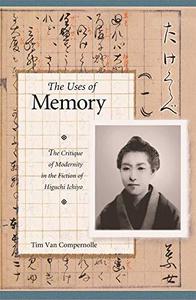
The Uses of Memory: The Critique of Modernity in the Fiction of Higuchi Ichiyo By Timothy J. Van Compernolle
2006 | 215 Pages | ISBN: 0674022726 | PDF | 3 MB
The pioneering writer Higuchi Ichiyō (1872-1896) has been described as "the last woman of old Japan," a consummate stylist of classical prose, whose command of the linguistic and rhetorical riches of the premodern tradition might suggest that her writings are relics of the past with no concern for the problems of modern life.Timothy Van Compernolle investigates the social dimensions of Ichiyō's artistic imagination and argues that she creatively reworked the Japanese literary tradition in order to understand, confront, and critique the emerging modernity of the Meiji period. For Ichiyō, the classical canon was a reservoir of tropes and paradigms that could be reshaped and renewed as a way to explore the sociopolitical transformations of the 1890s and cast light upon the human costs of modernization.Drawing critical momentum from the dialogical theory of Mikhail Bakhtin, the author explores in five of Ichiyō's best known stories how traditional rhetoric and literary devices are dialogically engaged with discourses associated with modernity within the pages of Ichiyō's narratives. In its close, sensitive readings of Ichiyō's oeuvre, The Uses of Memory not only complicates the scholarly discussion of her position in the Japanese literary canon, but also broaches larger theoretical issues.
E-Books → Reading and Mapping Fiction Spatialising the Literary Text
Published by: voska89 on 12-02-2023, 01:41 |  0
0
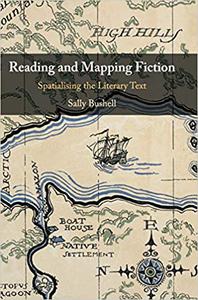
Sally Bushell, "Reading and Mapping Fiction: Spatialising the Literary Text"
English | ISBN: 1108487459 | 2020 | 350 pages | PDF | 15 MB
Do we map as we read? How central to our experience of literature is the way in which we spatialise and visualise a fictional world? Reading and Mapping Fiction offers a fresh approach to the interpretation of literary space and place centred upon the emergence of a fictional map alongside the text in the late nineteenth and early twentieth centuries. Bringing together a range of new and emerging theories, including cognitive mapping and critical cartography, Bushell compellingly argues that this activity, whatever it is called - mapping, diagramming, visualising, spatialising - is a vital and intrinsic part of how we experience literature, and of what makes it so powerful. Drawing on both the theory and history of literature and cartography, this richly illustrated study opens up understanding of spatial meaning and interpretation in new ways that are relevant to both more traditional academic scholarship and to newly emerging digital practices.
E-Books → Gears and God Technocratic Fiction, Faith, and Empire in Mark Twain's America
Published by: voska89 on 11-02-2023, 23:24 |  0
0
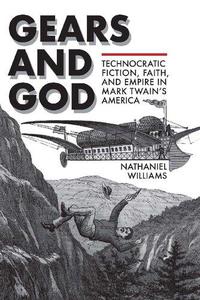
Gears and God: Technocratic Fiction, Faith, and Empire in Mark Twain's America By Nathaniel Williams
2018 | 224 Pages | ISBN: 0817319840 | PDF | 3 MB
A revealing study of the connections between nineteenth-century technological fiction and American religious faith. In Gears and God: Technocratic Fiction, Faith, and Empire in Mark Twain's America, Nathaniel Williams analyzes the genre of technology-themed exploration novels-dime novel adventure stories featuring steam-powered and electrified robots, airships, and submersibles. This genre proliferated during the same cultural moment when evolutionary science was dismantling Americans' prevailing, biblically based understanding of human history. While their heyday occurred in the late 1800s, technocratic adventure novels like Twain's A Connecticut Yankee in King Arthur's Court inspired later fiction about science and technology. Similar to the science fiction Descriptionlines of writers like Jules Verne and H. Rider Haggard, and anticipating the adventures of Tom Swift some decades later, these novels feature Americans using technology to visit and seize control of remote locales, a trait that has led many scholars to view them primarily as protoimperialist narratives. Their legacy, however, is more complicated. As they grew in popularity, such works became as concerned with the preservation of a fraught Anglo-Protestant American identity as they were with spreading that identity across the globe. Many of these novels frequently assert the Bible's authority as a historical source. Collectively, such stories popularized the notion that technology and travel might essentially "prove" the Bible's veracity-a message that continues to be deployed in contemporary debates over intelligent design, the teaching of evolution in public schools, and in reality TV shows that seek historical evidence for biblical events. Williams argues that these fictions performed significant cultural work, and he consolidates evidence from the novels themselves, as well as news articles, sermons, and other sources of the era, outlining and mapping the development of technocratic fiction.
E-Books → Contested Terrain Suburban Fiction and U.S. Regionalism, 1945-2020
Published by: voska89 on 11-02-2023, 22:17 |  0
0
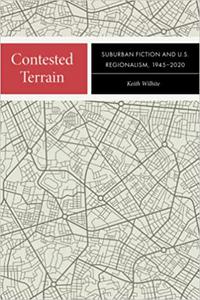
Keith Wilhite, "Contested Terrain: Suburban Fiction and U.S. Regionalism, 1945-2020 "
English | ISBN: 1609388577 | 2022 | 309 pages | PDF | 2 MB
Contested Terrain explores suburban literature between two moments of domestic crisis: the housing shortage that gave rise to the modern era of suburbanization after World War II, and the mortgage defaults and housing foreclosures that precipitated the Great Recession. Moving away from scholarship that highlights the alienating, placeless quality of suburbia, Wilhite argues that we should reimagine suburban literature as part of a long literary tradition of U.S. regional writing that connects the isolation and exclusivity of the domestic realm to the expansionist ideologies of U.S. nationalism and the environmental imperialism of urban sprawl. Wilhite produces new, unexpected readings of works by Sinclair Lewis, Lorraine Hansberry, Richard Yates, Patricia Highsmith, Don DeLillo, Jonathan Franzen, Jeffrey Eugenides, Chang-rae Lee, Richard Ford, Jung Yun, and Patrick Flanery.
E-Books → Spillane King of Pulp Fiction
Published by: voska89 on 11-02-2023, 04:54 |  0
0
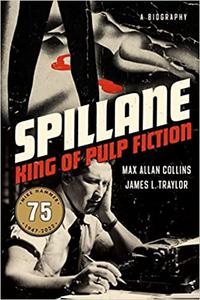
Max Allan Collins, James L. Traylor, "Spillane: King of Pulp Fiction"
English | ISBN: 1613163797 | 2023 | EPUB | 400 pages | 23 MB
The first-ever biography of the most popular and most influential pulp writer of all time, written by the collaborator who knew him best
E-Books → Nuclear Survival in the Suburbs Non-fiction
Published by: voska89 on 11-02-2023, 03:30 |  0
0

Nuclear Survival in the Suburbs: Non-fiction by Don Shift
English | 2022 | ISBN: N/A | ASIN: B09TSSJJT2 | 267 pages | MOBI | 0.38 Mb
How does a person who lives in a wood framed house in the suburbs survive a nuclear war, especially if they don't have a basement? Turns out, the crazy advice to get into the interior rooms of your house and shelter underneath the mattress isn't so nuts after all. You don't need a fallout shelter to survive and you may only have to stay inside to avoid lethal radiation poisoning.
E-Books → Gothic Fiction and the Writing of Trauma, 1914-1934 The Ghosts of World War One
Published by: voska89 on 11-02-2023, 01:49 |  0
0
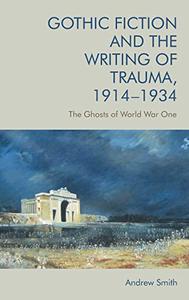
Gothic Fiction and the Writing of Trauma, 1914-1934: The Ghosts of World War One by Andrew Smith
2022 | ISBN: 1474443435 | English | 232 pages | PDF | 8 MB
This book examines how the representation of the ghost-soldier in literature published between1914-1934, both marks the presence of trauma and attempts to make sense of it. Andrew Smith examines short stories, novels, poems and memoirs that employ ghosts to reflect upon feelings of loss, paralleling the literary context with accounts of shell-shock which construe the damaged soldier as psychologically missing and therefore spectre-like.
E-Books → Guidelines for Writing Christian Fiction A Comprehensive Help for Aspiring Authors
Published by: voska89 on 5-02-2023, 00:52 |  0
0
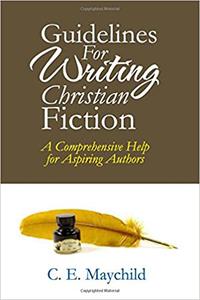
C. E. Maychild, "Guidelines for Writing Christian Fiction: A Comprehensive Help for Aspiring Authors"
English | ISBN: 9789366531 | 2014 | 460 pages | EPUB | 559 KB
This is not your regular how-to-write-a-great-novel manual. This book is written with your Christian sensibilities in mind. It is a very hands-on help book. Premised on the idea that writing Christian fiction is a spiritual journey, it takes you through: - Recognizing your calling and equipment to write Christian fiction - Where to find inspired ideas for great stories - Creative writing lessons and tips - Practical examples and illustrations - Writing exercises for individual and small group study; and - Bible-based reading activities. Guidelines for Writing Christian Fiction (A Comprehensive Help for Aspiring Authors) straddles creative writing and the godly search for purpose. It will arm you with the tools you need to build a successful writing career around life-changing fiction.
E-Books → The Ultimate Encyclopedia of Science Fiction The Definitive Illustrated Guide
Published by: voska89 on 4-02-2023, 09:25 |  0
0
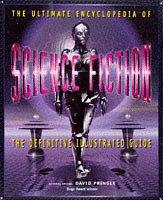
The Ultimate Encyclopedia of Science Fiction: The Definitive Illustrated Guide By David Pringle; David Langford; Brian Stableford; Paul Di Filippo; John Grant; Chris Gilmore
1996 | 304 Pages | ISBN: 185868188X | PDF | 60 MB
An A-Z reference guide to famous science fiction stories, the people behind them, and the heroes and villains which they created. Also charts the rise of science fiction from its original cult status to mass popularity in the eras of Star Trek and the X-Files. An informed, thorough description of science fiction's beginnings, which go back quite a few centuries, as well as an overview of the various sub-categories that fall within the overall genre: space opera, disasters, alternative histories, time travel, nuclear war, etc. A list of the most memorable books within each category is also mentioned. Front cover is a photograph of Maria's robot double in Fritz Lang's Metropolis (1926). With 250 color photographs and fifty black-and-white duotones, this up-to-date encyclopedia offers readers the very best from the millions of words, sounds, and images written, filmed, and recorded about the science fiction genre.
E-Books → The Encyclopedia of Science Fiction Movies
Published by: voska89 on 4-02-2023, 09:07 |  0
0
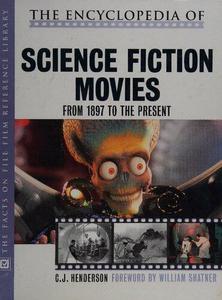
The Encyclopedia of Science Fiction Movies By C.J. Henderson; William Shatner
2001 | 516 Pages | ISBN: 0816040435 | PDF | 61 MB
Compiles information about science fiction films, providing the film title, studio, date of release, length, availability, producer, director, screenplay writer, music composer, special effects person, and lead cast members.



